Arthur Jafa
出生 : 1960-11-30, Tupelo, Mississippi, USA

Director
Commissioned by The Museum of Modern Art on the occasion of Just Above Midtown: Changing Spaces (October 9, 2022-February 18, 2023).

Editor
Collage showcased at the Gladstone Gallery in October 2022.

Director
Collage showcased at the Gladstone Gallery in October 2022.

Cinematography
With AGHDRA, Arthur Jafa takes his work in a much different direction. The film contains just a handful of cuts; all of the footage is original. It alludes to some of the concerns Jafa explored in Love Is the Message—the tenuousness of Black life, and the twinned notions of beauty and fear that can accompany it—but this new film does so in relatively oblique ways. Gone is the music video–style pacing of Jafa’s past works. In its place is a slower kind of montage that inspires introspection.

Director of Photography
With AGHDRA, Arthur Jafa takes his work in a much different direction. The film contains just a handful of cuts; all of the footage is original. It alludes to some of the concerns Jafa explored in Love Is the Message—the tenuousness of Black life, and the twinned notions of beauty and fear that can accompany it—but this new film does so in relatively oblique ways. Gone is the music video–style pacing of Jafa’s past works. In its place is a slower kind of montage that inspires introspection.

Director
With AGHDRA, Arthur Jafa takes his work in a much different direction. The film contains just a handful of cuts; all of the footage is original. It alludes to some of the concerns Jafa explored in Love Is the Message—the tenuousness of Black life, and the twinned notions of beauty and fear that can accompany it—but this new film does so in relatively oblique ways. Gone is the music video–style pacing of Jafa’s past works. In its place is a slower kind of montage that inspires introspection.

Director
Music Video for Kanye West's 2020 single "Wash Us In The Blood" directed by Arthur Jafa.

Director
If Love Is The Message trained Jafa’s scrutiny on black experience, The White Album shifts his lens to white experience, acknowledging that neither can be understood in isolation from the another. Again, he combines imagery from a wide array of sources, from music videos to confessionals posted to YouTube, to produce a trenchant examination of race relations in the United States.

Director
A montage of filmed sermons and gospel songs performed in black churches from the 1980s to the 2000s.

Director of Photography
It's a hot summer day in June, 1969. Marsha throws herself a birthday party and dreams of performing at a club in town, but no one shows up. Sylvia, Marsha’s best friend, distraught from an unsuccessful introduction between her lover and her family, gets so stoned she forgets about the party. Marsha, Sylvia, and friends eventually meet at the Stonewall Inn to celebrate Marsha's birth. When the police arrive to raid the bar, Marsha and Sylvia are among the first to fight back.

Director
Music: Jeff Mills "Medicine Man"

Director
A striking music-driven 8-minute video work proposes a vibrant scenario in which the histories drawn from the African American narrative of Blackness bear universal significance.

Director of Photography
Personal pilgrimages to three sites of extreme creativity, invention, and generosity: Alice Coltrane's Ashram, Watts Towers, and Watervliet Shaker Community

Editor
A reflection on Jafa's desire to craft a "black cinema" that is responsive to the "existential, political, and spiritual dimensions" of Black life. Comprised of found footage sampled from films, newscasts, sporting events, music videos, and citizen videos, all of it downloaded from the Internet, the clips have been woven together and set to Kanye West's anthem "Ultralight Beam." Together the images and music make for an intense, poignant meditation on African American life in the twentieth-century. This history is also the history, by necessity, of racism and prejudice.

Writer
A reflection on Jafa's desire to craft a "black cinema" that is responsive to the "existential, political, and spiritual dimensions" of Black life. Comprised of found footage sampled from films, newscasts, sporting events, music videos, and citizen videos, all of it downloaded from the Internet, the clips have been woven together and set to Kanye West's anthem "Ultralight Beam." Together the images and music make for an intense, poignant meditation on African American life in the twentieth-century. This history is also the history, by necessity, of racism and prejudice.

Director
A reflection on Jafa's desire to craft a "black cinema" that is responsive to the "existential, political, and spiritual dimensions" of Black life. Comprised of found footage sampled from films, newscasts, sporting events, music videos, and citizen videos, all of it downloaded from the Internet, the clips have been woven together and set to Kanye West's anthem "Ultralight Beam." Together the images and music make for an intense, poignant meditation on African American life in the twentieth-century. This history is also the history, by necessity, of racism and prejudice.

Director of Photography
Numa Perrier reimagines the story and moments in a distinct photograph of her mother. What results is a complex merging of memory, absence, and imagery set against the backdrop of Port Au Prince, Haiti.

Additional Camera
A high-concept, in-your-face experimental short showcasing the unique beauty, energy and exuberance of one of NYC's last underground subcultures: Voguing & Ballroom
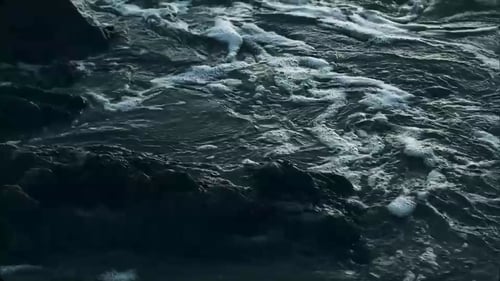
Director of Photography
What does it mean to be Black in America in the 21st century? The recently formed Black American film group TNEG™ has set out to elucidate this very question. Hearing from the likes of fine artist Kara Walker and musical artist Flying Lotus, the film is based on a deceptively simple approach -- asking a refined list of black 'specialists' as well as 'uncommon folks' questions about what they think, and more importantly as lead director Arthur Jafa states, 'What they KNOW' -- the film is an unprecedented 'stream of the black consciousness' and a strikingly original and rarefied look at black intellectual and emotional life. What's so unorthodox about this simple approach is that the interviews were recorded separately from the images in the film. What results is a breathtaking, kaleidoscopic look of American black life from the dawn of three original filmmakers.

Director
What does it mean to be Black in America in the 21st century? The recently formed Black American film group TNEG™ has set out to elucidate this very question. Hearing from the likes of fine artist Kara Walker and musical artist Flying Lotus, the film is based on a deceptively simple approach -- asking a refined list of black 'specialists' as well as 'uncommon folks' questions about what they think, and more importantly as lead director Arthur Jafa states, 'What they KNOW' -- the film is an unprecedented 'stream of the black consciousness' and a strikingly original and rarefied look at black intellectual and emotional life. What's so unorthodox about this simple approach is that the interviews were recorded separately from the images in the film. What results is a breathtaking, kaleidoscopic look of American black life from the dawn of three original filmmakers.
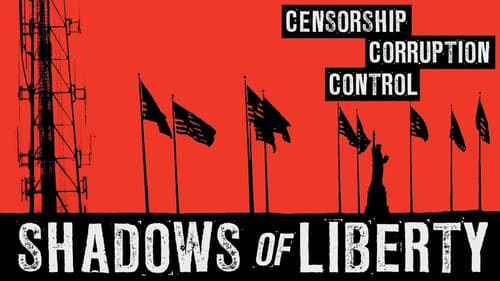
Director of Photography
Shadows of Liberty presents the phenomenal true story of today's disintegrating freedoms within the U.S. media, and government, that they don't want you to see. The film takes an intrepid journey through the darker corridors of the American media landscape, where global media conglomerates exercise extraordinary political, social, and economic power. The overwhelming collective power of these firms raises troubling questions about democracy. Highly revealing interviews, actuality, and archive material, tell insider accounts of a broken media system, where journalists are prevented from pursuing controversial news stories, people are censored for speaking out against abuses of government power, and individual lives are shattered as the arena for public expression has been turned into a private profit zone

Director of Photography
Shot in the span of ten years, Black August Hip-Hop Project takes us to New York City, Cuba, and South Africa to raise awareness about political prisoners in the United States and abroad. The documentary features interviews with intellectuals and social activists including Assata Shakur, as well as performances by artists such as Talib Kweli, Mos Def, David Banner, Dead Prez, and Common.

Director
"Deshotten 1.0" was the first collaboration between Arthur Jafa and Malik Sayeed and is the first TNEG project. Laying in a hospital bed, a young man replays the moments leading up to a nighttime shootout in the streets of New York.

Cinematography
A short and inconclusive treatise on women and gambling. The allure of risk taking, the contradictions of excessive behavior and a penchant for failure combine in this fairytale set in the abandoned decay which was onced a glamorous Atlantic City. A sentimental education at the seashore off-season.
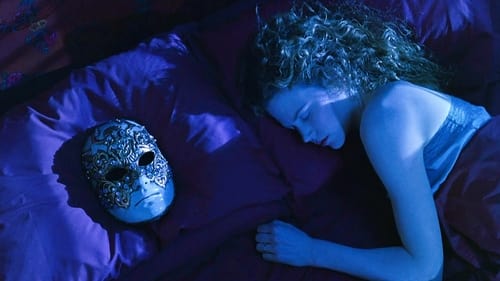
Second Unit Cinematographer
ニューヨークの開業医ビルとアリスの倦怠期を迎えている夫妻は、ビルの患者で友人のジーグラー夫妻が開いたクリスマス・パーティーに招かれる。このパーティでビルはピアニストであり旧友のニックと再会し、アリスはビルと別れて個別にパーティーを楽しむことにしたが、ビルは女性たちに誘惑され、一方でアリスはハンガリー人の紳士に誘惑される。

Director of Photography
The career of iconic and influential poet and writer Audre Lorde is seen up until death.

Cinematography
Malian filmmaker and New York University professor, Manthia Diawara critiques visual anthropology through the work of Jean Rouch.

Director of Photography
From Spike Lee comes this vibrant semi-autobiographical portrait of a school-teacher, her stubborn jazz-musician husband and their five kids living in '70s Brooklyn.

Director of Photography
The Black Audio Film Collective’s seventh film envisioned the death and life of the African American revolutionary as a seven part study in iconography as narrated by novelist Toni Cade Bambara and actor Giancarlo Espesito. The stylized tableaux vivants that memorialise Malcolm’s life referenced the early 20th century funeral photography of James Van der Zee’s The Harlem Book of the Dead and the elemental static cinematography of Sergei Paradjanov’s The Colour of Pomegranates.
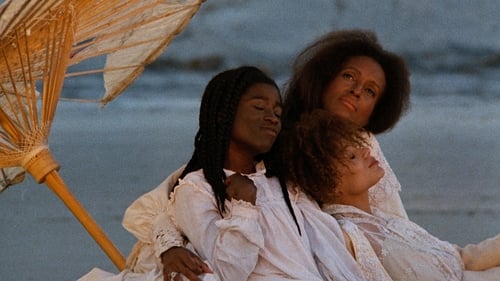
Producer
In 1902, an African-American family living on a sea island off the coast of South Carolina prepares to move to the North.

Director of Photography
In 1902, an African-American family living on a sea island off the coast of South Carolina prepares to move to the North.

Director of Photography
“Draw or Die” is the divine imperative received by the painter, Hannah, who is being nurtured by her Grandmother, but controlled by her pragmatic mother. When her Granny spirit shouts this command to Hannah, she closes a celebration of personal visions in a dance piece that is close to visionary in itself.

Director of Photography
Ishmael Huston-Jones physically carries his mother, Pauline Jones, into the improvisational dance space. While she dyes eggs and speaks about family history, he improvises a rhythmic dance-counterpoint to her speech.
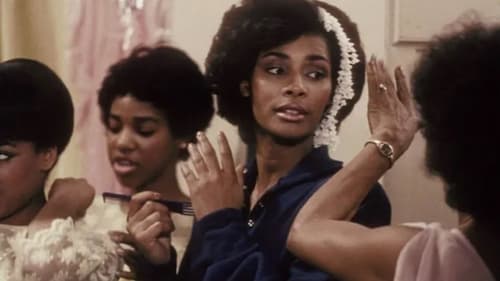
Assistant Camera
A man who despises his upwardly mobile lawyer brother reluctantly agrees to be best man at his wedding.




























